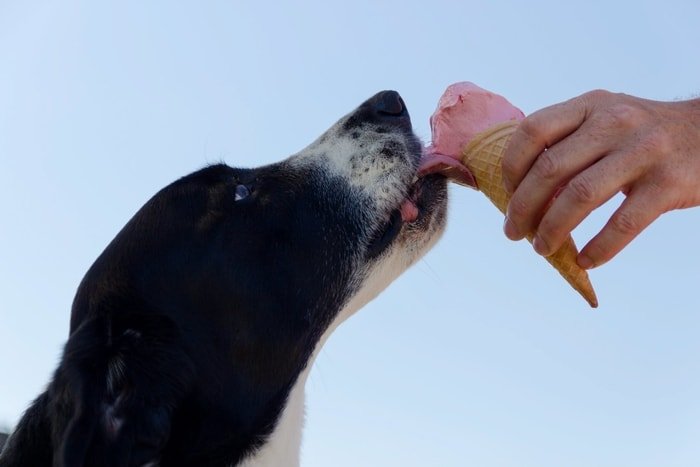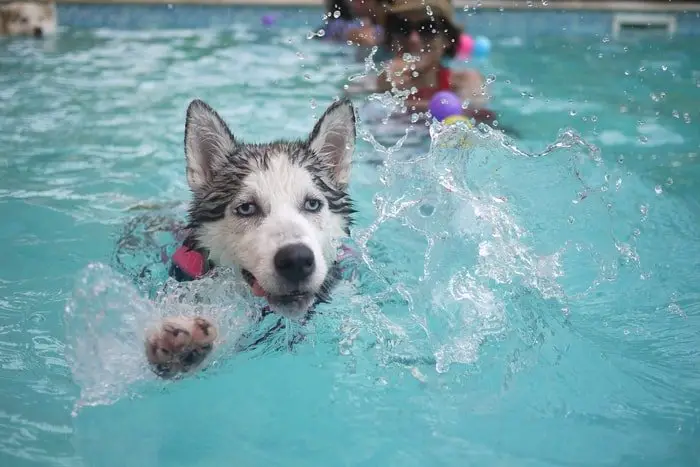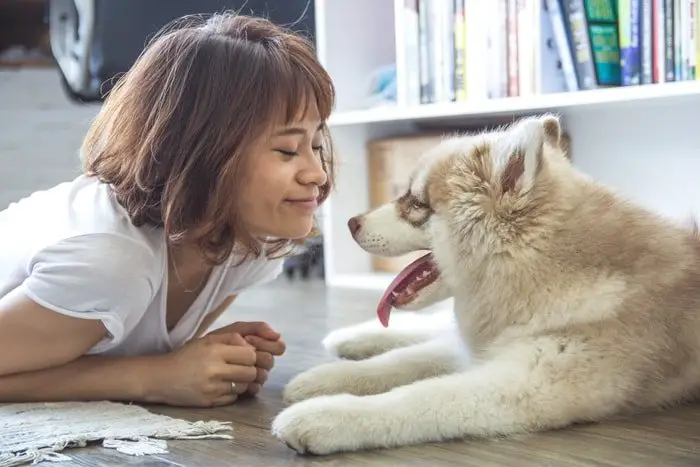Dog allergies are misguided reactions to foreign bodies by the body’s immune system, which can suffer both people and pets. There are a few different types of allergies like skin allergy, food allergy, the environmental allergy that may affect both the dog and its owner. Acute dog allergies are the most dangerous of all types which may lead to anaphylactic shock and death. Vaccination and bee sting may also lead to anaphylactic shock. So as a dog owner you must always be very careful about medicine, food, and environmental things.
Allergic Dog Breeds
Any dog breeds can develop an allergic reaction at any stage of their life. But there are some specific breeds of dogs that have some predisposing factors for the allergic reactions especially flat-faced and short-haired are less susceptible to allergies.

The breeds are American and English Bulldogs, Boston Terrier, Chinese Shar-Pie, and pugs. There are some breeds of dogs that are prone to allergies are Golden Retriever, Pit Bull Terrier, Doberman Pinscher, German Shepherd, Cocker Spaniel, English Setter, Standard Poodle, and Beacon Friesen.
Common Dog Allergies
There are some common allergens that your dogs may be allergic to the substances. The most common things are found around you in your home and dog’s home. These substances are smoke from cigarettes, dander, dust and dust mites, feather, fleas, grass, food ingredients, cleaning agents, pollen grains, mold spores, synthetic dye or chemicals, medicines, meat items (like beef, chicken, pork or mutton), etc.
10 Most Common Sources of Dog Allergies

There is numerous source of dog allergies around you that are very common, and you are using every day. Though you know better about all the substances for the learning purpose, I try to refresh your mind on certain substances that are most commonly affects your pets. If you keep a close observation on the following ten sources, I think 90% of the cause you can remove at your own.
1. Human Food Allergy
Human food allergies are common in dogs; you must give special attention because food allergies can pose serious health problems in dogs. The food originated allergies may affect your dogs at any age, and you must be very cautious to identify the source of allergies.

The most common human foods that may cause allergic reactions to your dogs are beer, wine, spirits (Alcohol), some fruits avocado, bones of some meat, fats, coffee and chocolates, certain beverages(tea and soft drinks), milk and dairy products, garlic and onions, raw egg, meat, fish, yeast, sweet beverages, etc.

The most common dog allergies symptoms are itching at different parts of the body, ear inflammation, gastrointestinal problems including diarrhea, nausea, and vomiting. As soon as you observe the allergic reaction in your dog first contact with your vet and identify the cause.
Recommended Post: Top 20 Things To Consider While Choosing The Best Working Dog
2. Dog Flea Allergy
Dog flea allergic dermatitis is a very common source of skin discomfort to dogs. The flea bite and saliva cause irritation to the dog’s skin. The following tips will allow controlling the dog fleas: comb your dog daily, bathe your dog frequently, and use all-natural pest repellants.
3. Environmental Allergens
The most common environmental allergens are pollen grains, certain grasses, ragweeds, chemicals, dust, molds, mites, and even some fabric clothes. You must be cautious about the exposure of such materials with your pets.

It is crucial to identify the source of environmental dog allergies in around you. At the beginning of correcting the situation, please remove the cause of allergy and take to your vet. If the situation is not so serious, the only treatment is a simple antihistamine.
4. Seasonal Dog Allergies
Dogs can also suffer from seasonal allergies like as the human. The signs your dog may have seasonal allergies include Irritated skin, Rashes, and hives, Itching, Hair loss. The common signs include red and puffy eyes, sneezing, ocular discharge, and skin reactions. The simple treatment is an antihistamine to your dog’s consultation with the vet.
5. Airborne Dog Allergies
The other name of airborne dog allergies is atopy. The most common causes of airborne allergies are pollen grain, mold, dust, and other small inhalant particles. The symptoms of airborne allergies are common to other allergies and respiratory issues. The most common signs are itching, scratching, licking, and chewing at the affected parts, redness, and swelling of the skin.
Recommended Post: The Preliminaries About Rabies: You Must Know As A Dog Owner
It is difficult to diagnose the airborne dog allergies with food and environmental causes but after confirmation treated with anti-inflammatory drugs.
6. Home Dog Allergies
There are many substances around your home could be problematic for your pups like Perfumes, Cigarette smoke, Dust and dust mites, Cleaning products., Fabrics, Rubber, Plastic, and many household ingredients.
It is very difficult to diagnose the exact cause of the home dog allergens and cause of reactions. The treatment of home dog allergies symptoms includes anti-inflammatory drugs. But the most effective way is to remove the causal agents and clear the dog’s environment clearly free from potential substances.
7. Drug Allergies
Certain drugs used in dogs for treating various diseases may cause allergic reactions in your dogs. So, before treating a dog you must be very much concerned about the drug reaction to individual dogs. These drug allergies are not the same for all dogs and most unpredictable.
The symptoms of drug allergies are diarrhea, vomiting, swelling in the throat region, respiratory problems, depression, lethargy, and loss of appetite. The removal of the causes is the main treatment of drug allergies and consult with the vet.
8. Medicated Shampoo
In some cases, bathing or medicated shampoo may create an allergic reaction to your dogs. The ingredients of the shampoo may produce histamines that affect the skin of your dogs and reaction happens shortly after they bathe. The common symptoms are itching, redness, swelling, bald patches, hives, and restlessness.
Recommended Post: How To Train Your Dog: Principles of Basic Obedience Dog Training
If your dog affected by shampoo allergies then first remove it and apply some topical antihistamines. In more severe cases and persistent allergic reactions, you must consult with your vet as soon as possible.
9. Skin Dog Allergies
The skin dog allergies are the sequel of secondary infection of other infections caused by bacteria, viruses, fungus, or bite by insects or other animals. Your pet may scratch or bite in the infected skin and may create the situation more dangerous. The treatment of skin allergies depends on the proper diagnosis of causes and eradication of the source of infections.
10. Allergen-Induced Allergies.
Certain allergens normally present in the animal body that may induce allergic reactions. The conditions may be known by swelling of the face, lips, throat, eyelids, earflaps which may look detrimental and may lead to death. The simple treatment of such a condition is an antihistamine.
Dog Allergies Symptoms
The dog allergies specific symptoms depend on the severity of the allergic reactions and the time of occurrence. The symptoms may be acute or chronic and the amount of allergen exposed at a time. Red skin rash which is small, hives, congestion in the nasal septum, eyes become watery, itchy and red, severe coughing, wheezing, tightness of chest, and rapid breathing are the most common symptoms of dog allergies. Your dog may excessive biting the skin, constant licking the skin, oculonasal discharge, redness of the eyelid, diarrhea, vomiting, swollen external ear, constant growling, restlessness, etc.
Diagnosis of Dog Allergies
The diagnosis of dog allergies is based on correctly identifying the causes and recent activities of your pets. The recent activities include the food, water, medicine intake, season of the year, the surrounding environment, contact with other pets, and the introduction of new members in your family. The vet will finally identify the cause and will give the treatment accordingly.
Dog Allergies Treatment
To treat the allergic reaction of your dog, at first you must remove the causes and source of infection eradication. In extreme cases, your vet will go for the medical treatment. Simple medical treatment includes antihistamines, nasal corticosteroid, immunotherapy, and some other anti-allergen drugs.
Antihistamines block the histamines that release from the allergic reactions which include loratadine, chlorpheniramine, cetirizine hydrochloride, fexofenadine, etc. The nasal corticosteroids help to reserve the inflammation caused by the immune response and relieve nasal congestions. Immunotherapy is used to treat the chronic allergic reactions to animals and even men.
Recommended Post: What To Do If Bitten By A Dog: Dog Bite Treatment and Prevention
The system involves the injection or introduction of allergens to an individual in gradual form and increases the tolerance. Other treatment includes the application of inhalable corticosteroids to allergic patients through airways.
Dog Allergies Prevention
Prevention of dog allergies is more important than treating it after the onset of such a condition. There are a lot of methods and tricks that you can easily apply to your home to prevent the allergens and reduce the load of further infections. In the following paragraphs, I shall briefly highlight the 20 lifestyle tips for the prevention and control of dog allergies that help you.
20 Lifestyle Tips That Can Reduce the Impact of Dog Allergies
The following tips will help you to reduce the impact of dog allergies at home and outside the home. The tips are in general, and all may not apply to you. I think from the below tips you will be benefited a lot.
1. Eradication of Fleas
Prevention of fleas is the best treatment for allergies caused by fleas. Before every season you should start the flea control program in your pet’s house thoroughly. The pets that are roaming outdoor or contact with other pets can carry fleas in your house. Take expert advice for the adequate flea control program for your pets.
2. Remove Dust
Regular cleaning and removing dust from your pet’s environment regularly to reduce the load in allergens and make a schedule cleaning program. The cleaning area includes curtains, carpets, bare areas, under the furniture, pets house, bedding, and utensils.
3. Bathing of Pets

You must give weekly bathing to your pets with shampoo to remove dust and oily materials from the body coat. This bathing will reduce the pollen grain and other environmental allergens that relieves the itching. Take expert advice from an experienced vet for the best shampoo suited for your pet. Ensure quick drying after every bathing that will also reduce the chance of allergies.
4. Checking Foods
If you suspect that your dog has a food allergy, it will need to be put on an exclusive prescription or hydrolyzed protein diet that to free from the allergen. The decision will be given by your vet to use the specific food for your pet which is suitable for her.
5. Avoid Touch Eye
Try Avoiding touching eyes or face after contact with dogs. If you have dog allergies, these simple tips will change your life and may relieve you from such problems.
Recommended Post: Top 13 Small Sized Dog Breeds For Families and Kids
6. Hand Wash
Wash your hands with soap immediately after contact with dogs and cats. This washing habit also followed after visiting any home having pet animals.
7. Avoid Close Contact

Please try to avoid close contact with dogs, such as hugging or kissing them. This habit will reduce the affected rate by dog allergies.
8. Vacuum Cleaner
You may use a vacuum cleaner to trap and contain airborne allergens in the home to clean carpets and sofa. The vacuum cleaner is the best method to remove hidden allergens from the dogs’ house and surrounding areas.
9. Clean House
Make sure to clean the house, wash the bedding weekly, and keep the house tidy every day. Never allow an unknown pet in your home to visit that may contaminate your environment.
10. Winter Months
Cleaning more often during winter months as clouds of dust are more deposited and dry this time. Excessive care must be taken regarding the dog’s skin and coat.
11. Restricting Movement
Restricting dogs to specific rooms or spaces if they affected by allergies. This will prevent the further spreading of allergens.
12. Dog Free Bedrooms
Keeping dogs out of the bedroom and off the furniture if you are frequently affected by pet allergies. The allergens are mostly affected by sleeping.
13. Use Mask
Wearing a dust mask and gloves while cleaning or in areas with dogs. If the areas are too dirty and dry, then you must use a face mask and gloves to clean the dog’s house.
14. Clean The Outdoor
Brushing and cleaning dogs outdoors when possible. A clean and healthy environment will reduce the risk of dog allergies.
Recommended Post: Top 10 Most Popular Show Dogs Breeds For Competitive Events
15. Allergy Test
If you considering bringing a dog into your home, you must do an allergy test or go for a testing period to identify the allergic reaction. This is beneficial for persons who have a history of allergies.
16. Keep Your Floors Bare
Carpets of floor trap dander from pets. If the floors are covered with carpet, ensure weekly cleaning with the vacuum cleaner. You can use throw rugs and wash them in hot water in extreme cases and at regular intervals.
17. Ask a Family Member to Change the Litter Box or Clean an Animal’s Bed
You must employ somebody who has no pet allergies to remove the litters and other debris of your pet. Clean the cage and pet house regularly because the litters are the excellent breeding place of dander.
18. Vacuum Weekly
Use a vacuum with a filter to clean the pet house and all the flat. This will remove every small allergic particle from the carpet or other floor coverings of your house and reduce the load of allergens.
19. Clear Away, Clutter
You must employ less stuff that makes it easier to clean and get rid of dander, the dead skin, and scalp cells shed by pets that trigger allergies.
20. Visit with Pet-owning Friends Outside Your Home
Your friend’s clothes will bring in dander if they own a pet. If possible meet them at a restaurant or somewhere else instead.
The Concluding Advice on Dog Allergies
Dog allergies are very common problems for both the dog owners and as well as the person who comes in contact with the dog. There are numerous causes of pet allergies, and most of the causes are in around the dog’s body, environment, external parasites, dog food, human food, home dust and debris, medication, dog shampoo, lotions or soap, skin problems and sometimes faulty administration of drugs through cutaneous route. The other dog allergies may happen from inheritance problems and in certain long-haired dog breeds.
Recommended Post: Everything You Need To Know About Dog Grooming: The Ultimate Guide
You can easily prevent potential pet allergies by removing the causes of allergies. The most important issue is to prevent dog allergies is correctly diagnose the cause. The prevention methods will be designed by correctly identifying the origin. Then your doctor or vet will decide the line of treatment.
“Prevention is better than cure” so you must remember the thumb rule in case of pet allergies also. The preventive measures and tips I have discussed in the above will must help you a lot. In this article, I have tried to accumulate all relevant pieces of information and probable prevention and treatment methods regarding dog allergies. You will find all pieces of information related to pet allergies prevention and treatment in one article.
If the above pieces of information help you and little benefits you will receive through this write-up, please subscribe to our website to get more related things. Please share the information via social media with these your friends and family also can be benefited through the article and our website.